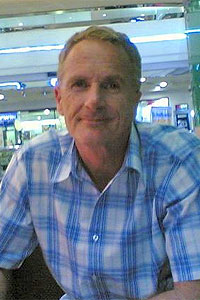This week the 10 member countries of Asean become a community as mandated by Asean leaders in November. This is a notable achievement for a group of countries which have much to gain from economic integration and security cooperation, but which is home to enormous diversity in cultures, religious beliefs, norms, languages, ethnicities and access to economic opportunity.
The New Year is not a time to be pessimistic, so let us just say that Asean leaders have set a mighty challenge for the years ahead. In addition to formally declaring the Asean Community a reality, leaders outlined their Asean Community Vision 2025 to guide the 10 member countries in creating a stronger and more people-oriented, people-centred community.
What is still missing is how the leaders' aspirations will be implemented and how success will be measured.
Over the past 15 years, the 10 governments have made steady progress towards their economic goals and made great efforts to forge a more secure and peaceful Southeast Asia. But a regional economic consortium and a regional security bloc do not constitute a community of peoples.
The litmus test for the fledgling Asean Community lies in delivering the socio-cultural community. There is great socio-cultural diversity even within each member country and most cannot claim to have inclusive, harmonious and tolerant societies.
What chance then of success at the regional level?

Pretty signs have been up for a number of years. Now comes the hard part. (File photo)
This challenge needs to be addressed first and foremost at the national level. Tolerance and understanding must start at home before it can be exported.
Yet there are many indications, even in the last few weeks, that governments in the region are not committed to creating inclusive and tolerant communities. New laws have been passed which target minority communities and religions, crony capitalism continues to marginalise those who do not have the right cronies, religious celebrations of minority faiths have been banned, law and order is a disputed concept and three countries in the grouping officially remain least developed countries even after 16+ years of Asean membership.
Corruption tears at the fabric of almost all of the 10 countries, creating large sectors of society which feel alienated and often resentful of their political and business leaders. Only one country in the region manages to secure a place in the top 40 of the 174 countries in Transparency International's Corruptions Perceptions Index. The list goes on.
A good starting point for creating caring and integrated communities in Asean would be the promotion of good governance practices. Governments must take the lead in winning the confidence of all their people from all walks of life, all ethnicities in addition to followers of all faiths.
They must demonstrate that they are truly committed to improving the lives of all without fear or favour. Good governance requires improved accountability, transparency and integrity.
Importantly, measures taken to improve governance must be measurable. Specific and verifiable performance targets need to be set across a range of indicators. This is not difficult as there are now a large range of governance performance indicators prepared annually by UN and other agencies which "score" each country based on both research and perception polling.
The UN's Sustainable Development Goals (SDGs) provide a useful model of measurable and deliverable targets across a range of 17 sectors. Among the issues addressed by the SDGs are poverty reduction, gender equality, decent work, justice and strong institutions, reduced inequality, health, well-being and quality education -- all issues which currently divide communities in Southeast Asia. All are issues which need to be addressed if an inclusive, tolerant and decent Asean Community of people is to emerge.
As UN members, all 10 governments are already committed to delivering on these goals by 2030. To demonstrate Asean's commitment to community building, Asean could set itself the target of achieving these SDGs for all 10 member states by 2025. That should not be difficult for a community which includes two high-income countries and five middle-income countries.
For Asean to become a genuinely people-centred community, it must assume collective responsibility for the welfare and happiness of all its peoples. While governance improvements at the national level are the top priority, some issues require collective action.
The governments need to do more to facilitate and encourage inter-faith dialogue, both at the national and regional levels, and to address cross-border problems such as people trafficking, overfishing and aviation safety.
In moving forward on the creation of an Asean Socio-Cultural Community (ASSC) the 10 governments must now move beyond the platitudes and generalities which populate the ASSC Blueprint and commit to specific and measurable targets. These must then be publicised. The proposed biennial reviews must also be made widely available so that governments can be held accountable for their performance.
The review mechanism proposed in the ASSC Blueprint is an "implementation-focused monitoring system" with targets which "may be expressed in funds, expertise, training or other inputs". This inputs-based approach should be abandoned in favour of output-based monitoring.
Progress can only be made in creating a people-oriented Asean Community if government efforts produce meaningful and measurable progress in improving the livelihoods of all its people.
Yan Flint is a former New Zealand Ambassador to Vietnam and former Director of the Mekong Institute. He can be contacted at yanfli@kku.ac.th
